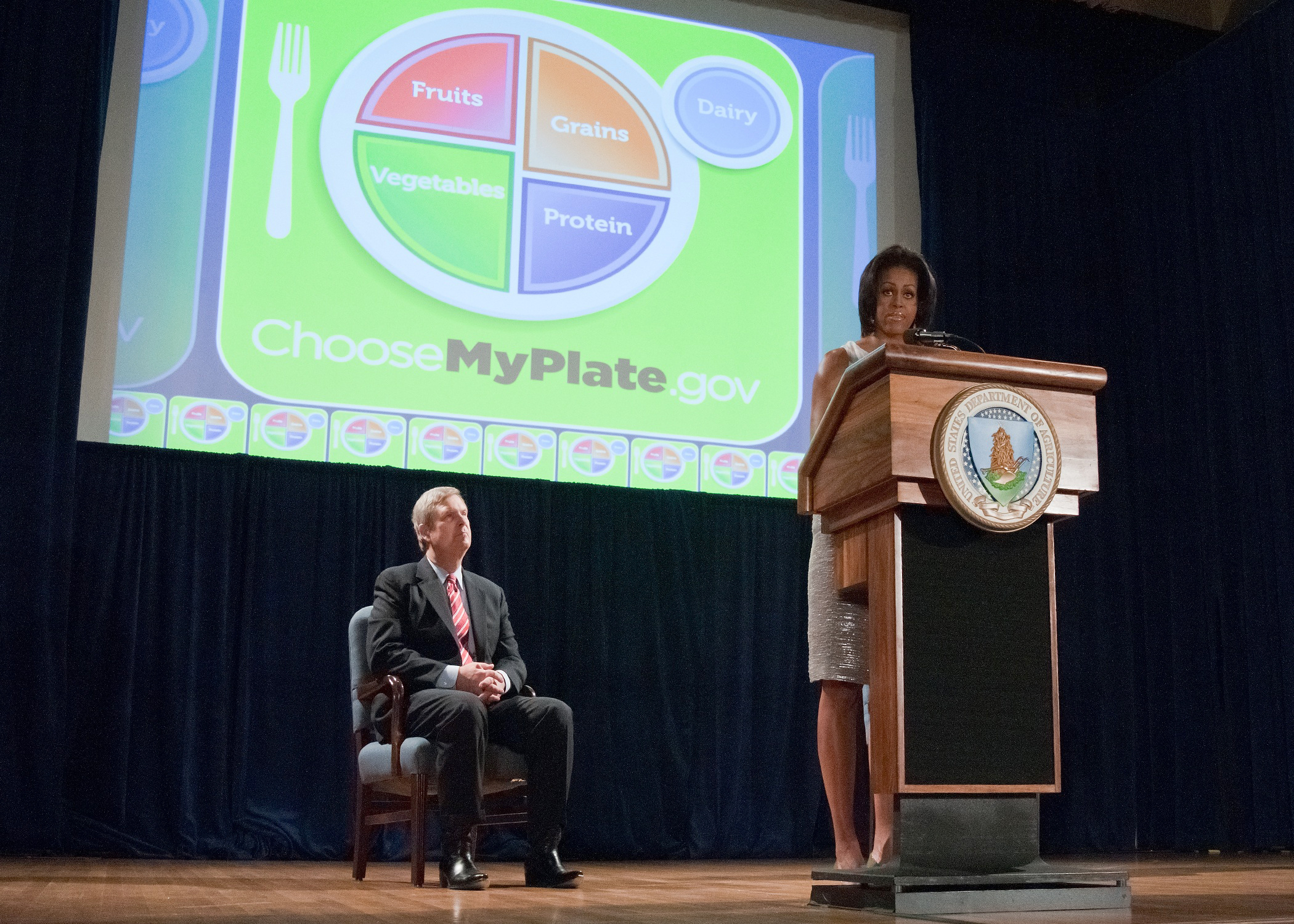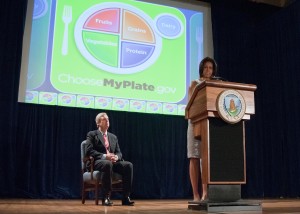Michelle Obama vs. American cafeterias

Students create #ThanksMichelleObama hashtag to complain about unpalatable food in schools

America’s First Lady and healthy eating advocate, Michelle Obama, released a Vine early last month of her posing with a turnip while saying, “Turnip for what?”
Her play on words on the hit song, “Turn Down for What,” was a response to the question of how many calories she burns every time she turns up, posed by an impersonator of her husband, United States President Barack Obama.
Earlier this year, Michelle Obama made a special appearance in a skit called “Ew!” that aired on Jimmy Fallon’s Tonight Show.
In the skit, the First Lady encouraged Sara (Jimmy Fallon) and Stacy (Will Ferrell) to exercise and start eating healthy snacks.
For instance, she recommended eating kale chips instead of potato chips.
As childhood obesity becomes a growing issue in the U.S., the First Lady’s recent immersion into pop culture has drawn the attention of the American public in an entertaining fashion.
It has also assisted in her Let’s Move! campaign.
The campaign, initiated in 2010, promotes healthier nutrition regulations to be implemented in public schools all over the U.S.
With the goal of lowering childhood obesity and diabetes rates in the country, the campaign encourages the reduction of fat, simple sugars and sodium in school lunches and replacing it with more whole grains, fresh fruits and vegetables.
The implementation of these regulations has received mixed responses from the student population.
https://twitter.com/AlexGuy_/status/539989715005747200
Last week, Michelle Obama was once again placed in the spotlight when students began to post complaints online with the sarcastic hashtag #ThanksMichelleObama.
In only a few days, there were over 20,000 posts with the hashtag, some including photographs of unappetizing looking meals.
The complaints are mostly centered on the quality of the meals provided, targeting the taste and texture, but some also regard the size of the portions offered.
A quick Google search of #ThanksMichelleObama will result in photographs of hot dogs without buns, rotten apple slices, unidentified blobs of food and mystery mush — all unpalatable food.
You may also find pictures of trays with as little as a small chicken burger and a bit of applesauce or garbage bins filled with untouched meals.
Remember when school lunch looked like this? They don’t make ‘em like they used to. #ThanksMichelleObama pic.twitter.com/S61is1OOYa
— Shorty Awards (@shortyawards) December 1, 2014
However, the hashtag has also been used by a variety of people with the intention of sincerely thanking Michelle Obama for the changes she has brought to schools in the U.S.
For instance, a post sent from Nashville displayed a reasonably sized portion of salad, corn, chicken and grapes.
Showing that meals served in school can, in fact, be fresh, healthy and delicious and indicating that the problem lies in the inconsistency in the quality of the food served in schools throughout the country.
https://twitter.com/_k_truitt/status/539882688816353280
Though Michelle Obama is at the centre of the campaign, students are wrong to blame her for the quality, or lack, of their meals.
Instead, the criticism should be directed at local school districts, which are responsible for selecting the food items that go on the menu.
Funding for school lunch programs should be increased in order for administrators to create better menus that would satisfy their students.
Additionally, bringing bagged lunches into schools should be allowed.
“If the kids don’t eat the food, then all I have is healthy trash cans” #thanksMichelleObama http://t.co/fPOJzgCXZX
— Scott Overpeck (@soverpeck) December 2, 2014
This would enable students who are not satisfied with their lunch options to prepare their own meals at home according to personal tastes, instead of being forced to eat bland food to avoid starving at school.
It would also reduce the amount of food wasted in public schools.Parents also play a significant role in the fight against childhood obesity and diabetes.
By creating a healthy environment at home, they set an example for the rest of the family.
Adding fruits and vegetables to meals at home can easily do this, as well as limiting sweets and encouraging exercises like going for a walk at the park.
#ThanksMichelleObama for my daily rashon of prison food pic.twitter.com/yNjsHXtSVa
— Phil Robertson (@estudiodrummer) November 26, 2014
This environment teaches kids the importance of a healthy lifestyle and makes adapting to changes in lunch programs easier.
During my first couple of years in high school, the school cafeteria’s offered delicious food items such as curly fries and hamburgers.
When the government imposed new health regulations, students had to say goodbye to their favourite greasy foods and welcome the new, healthier menu.
This created a similar wave of complaints from the students, but in the end, students and the school board worked together to reach a compromise and the cafeteria was allowed to sell the delicious curly fries once a week.
Michelle Obama has taken the first step in changing the health of American youth.
It is now up to local district school boards and parents to take the next steps and support her cause.
Students may not accept the changes in their lunch menus, but at he end of the day, meals offered in public schools will never replace a home cooked meal.
https://twitter.com/alex_rayonec10/status/537675699021434880


